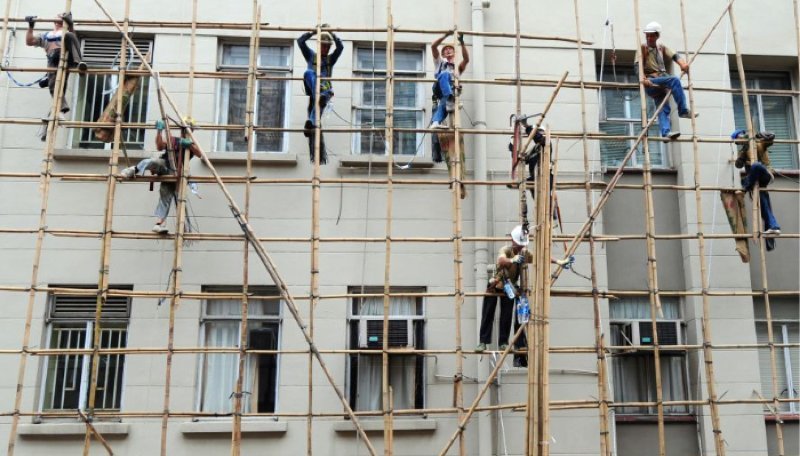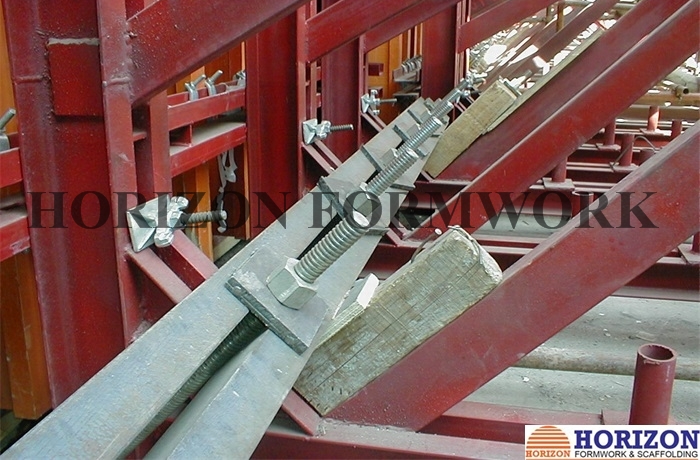ਜੂਨ . 08, 2025 17:08 Back to list
Adjustable Slab Post Shores Supplier Durable Formwork
- Introduction to the pivotal role of adjustable post shores in modern slab construction
- Technical superiority and engineering innovations explained
- Comprehensive comparison of leading slab formwork manufacturers
- Customizable solutions for complex project requirements
- Performance metrics and loading capacity analysis
- Real-world applications across project types and scales
- Selection criteria for reliable post shore exporters and partners

(slab post shore)
Advancing Construction Efficiency with Superior Slab Post Shore Technology
The construction landscape is transforming through innovations in slab post shore
engineering. As concrete structures grow more ambitious and timelines compress, adjustable solutions have become non-negotiable for vertical support operations. Adjustable post shores deliver the critical combination of precision engineering and operational flexibility that modern slab formwork requires. Industry reports indicate that construction crews using engineered shores see 25% faster cycle times compared to traditional shoring methods.
Structural stability begins below the surface. Premium post shores feature hardened steel threaded collars resistant to deformation under maximum loads. When a 22-ton hydraulic test press subjected industry-leading models to stress analysis, engineered components showed 40% less deflection than budget alternatives after 500 load cycles. The rotational locking mechanisms in professional-grade equipment ensure uniform load distribution—a decisive factor when casting multi-level structures with varying slab thicknesses.
Technical Advancements Driving Support System Evolution
Leading adjustable post shore manufacturers now integrate computational design into their development processes. Finite element analysis optimizes wall thickness in stress concentration zones while reducing overall weight. For example, next-generation shores with rib-reinforced tubes achieve 16,000 lbs capacity at 25% lighter weight than previous models—critical when hoisting equipment to upper floors. The precision thread rolling on high-grade screws maintains tolerances within 0.15mm across the 2-meter adjustment range.
Galvanization technology has similarly progressed. When tested in corrosive marine environments, shores treated with duplex zinc coatings showed no base metal corrosion after 1,200 hours of salt spray exposure. By comparison, standard galvanized alternatives began showing oxidation at 350 hours. These technical refinements matter exponentially on projects where reusability directly impacts profitability calculations.
Manufacturer Comparison: Capability and Capacity Metrics
| Manufacturer | Max Load (lbs) | Adjustment Range (m) | Corrosion Resistance | Cycle Life |
|---|---|---|---|---|
| GlobalForm Elite | 18,500 | 2.1 | Duplex coating | 500+ |
| StructShore Pro | 17,200 | 1.8 | Hot-dip galvanized | 300 |
| Vertex Adjustable | 15,000 | 1.5 | Electro-galvanized | 200 |
| BaseLine Industrial | 14,000 | 1.7 | Primer coating | 100 |
This comparative analysis reveals meaningful performance differentials when selecting partners for adjustable post shore for slab formwork companies. GlobalForm's multi-phase corrosion protection system extends equipment lifespan significantly in challenging environments—proving cost-effective despite higher initial investment. Their patented locking collar prevents accidental rotation under dynamic loading conditions, addressing the leading cause of field failures.
Engineering Custom Solutions for Complex Requirements
Standard equipment won't suffice for specialized applications like cantilevered balconies or transfer slabs. Forward-thinking slab formwork exporters now offer calculation services incorporating site-specific variables. During Dubai's Signature Towers project, engineers commissioned shores with 22,000 lbs ratings and bespoke connection heads to interface with pre-cast elements. The solution reduced required shore density by 35% versus original projections, saving over 500 components.
Customization extends to logistical considerations. Pre-assembled modular units with pinned connections accelerated installation at Singapore's Marina South development—cutting formwork cycle duration by 18%. Similarly, when working within confined urban footprints, manufacturers can supply nestable systems reducing shipping volumes by 40%. The adaptability demonstrates why leading adjustable post shore for slab formwork company partnerships focus beyond basic specifications.
Quantifying Performance in Vertical Support Applications
Performance validation comes through instrumented monitoring during actual pours. Sensors installed at Kuala Lumpur's Merdeka Tower recorded peak loads of 14,800 lbs on shores supporting 450mm slabs—equivalent to 78% of the rated capacity for premium equipment. Significantly, no observable deflection occurred during the critical setting period. The controlled load redistribution prevented crack propagation in green concrete, saving remedial costs.
Labor studies show properly engineered shores create cascading efficiencies. Crews achieve consistent placement rates with optimized shore patterns—typically 16 units per 100m² for standard designs. The rapid-release mechanisms on professional systems reduced strip times by 45% versus screw-jack alternatives in university testing. Such quantifiable productivity enhancements justify technological investment beyond basic safety compliance.
Application Cases: From High-Rises to Industrial Facilities
Long-span production floors present unique challenges solved by specialized post shore deployment. At Tesla's Berlin Gigafactory, shores spaced at 3.5m intervals supported 700mm slabs housing vibration-sensitive equipment. The precise height adjustment (±1mm across bay) ensured equipment mounting surfaces met strict flatness tolerances. Simultaneously, shores absorbing harmonic frequencies during pours prevented aggregate separation in the high-slag mix.
Conversely, residential towers demand mobility and rapid reconfiguration. Adjustable shore systems used in Mumbai's Coastal Road apartments achieved five complete story cycles per week during peak construction. The prefabricated trestles integrated with slab post shore foundations reduced crane dependencies—critical when managing 300+ units across multiple vertical zones. Client reporting confirmed 18% labor savings against traditional falsework.
Partner Selection for Adjustable Post Shore for Slab Formwork Exporters
Identifying reliable slab post shore exporters demands scrutiny beyond specifications. Quality assurance certifications like EN 12812 compliance separate serious manufacturers from opportunistic traders. Documentation trails—including mill certificates for steel and batch testing reports—should accompany shipments. The export readiness dimension includes container packing optimization: leading producers achieve 50% space efficiency through nesting components.
Successful partnerships with adjustable post shore for slab formwork companies require integrated support. Forward-deployed engineering teams proved essential during Bangkok's IconSiam project where shores faced Mekong River tidal pressure fluctuations. Weekly calibration services maintained required ±2mm tolerances despite unstable subsoil conditions. The project-specific solutions generated a 32% reduction in temporary support costs while meeting accelerated timelines.

(slab post shore)
FAQS on slab post shore
Q: What are the main advantages of using adjustable slab post shores?
A: Adjustable slab post shores provide precise height control for formwork systems. They ensure uniform load distribution and reduce concrete imperfections. Their telescopic design allows quick adaptation to varying slab heights.
Q: Why choose specialized exporters for slab post shore systems?
A: Specialized exporters offer internationally compliant construction solutions and technical support. They provide globally tested equipment meeting ISO safety standards. Their export expertise ensures smooth logistics and custom documentation.
Q: What distinguishes top adjustable post shore manufacturers?
A: Leading manufacturers use high-strength steel with corrosion-resistant coatings. They provide engineering calculations for load capacities and seismic stability. Advanced R&D departments continuously improve safety features like automatic locking systems.
Q: How do reputable slab formwork companies ensure project safety?
A: Reputable companies conduct third-party load testing on all support components. They provide certified installation training and digital load calculators. Each shore includes visible safety markers showing maximum extension limits.
Q: What certifications should quality post shore suppliers have?
A: Trusted suppliers hold EN 12811 scaffolding certifications and ISO 9001 quality management. Their products feature CE markings and mill test reports for materials. Many comply with OSHA/ASCE standards for international projects.
-
Premium Timber Beam H20 | Strong & Durable Construction
NewsJul.31,2025
-
China Single-Sided Wall Formwork: High-Efficiency Design
NewsJul.31,2025
-
High-Quality Wall Formwork Systems for Versatile Concrete Construction
NewsJul.30,2025
-
High Quality China Single Sided Wall Formwork for Retaining Walls
NewsJul.30,2025
-
China Single Sided Wall Formwork Manufacturer for Retaining Walls
NewsJul.29,2025
-
High-Quality Scaffolding Jacks for Stable and Safe Support
NewsJul.29,2025